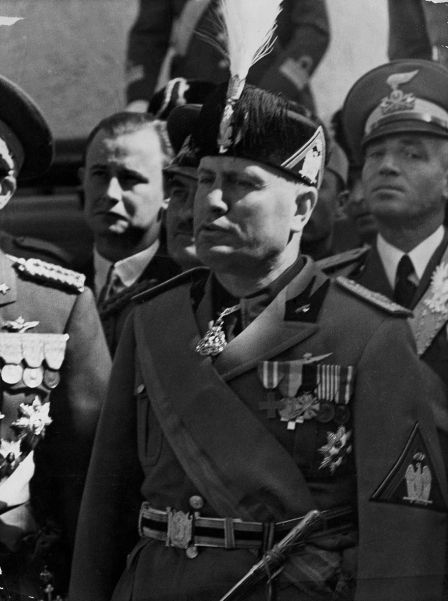2 July
Nazi Party, Röhm Purge
Röhm is shot after refusing to take his own life. In recognition of the part Eicke played in the Night of the Long Knives, Himmler appoints him Inspector of Concentration Camps and head of the SS-Totenkopfverbände. As a direct result of the Röhm Putsch most of the unofficial camps or “wild man camps” are closed. The remaining SA camps are removed from the jurisdiction of the civil authorities and taken over by the SS. The first full-time SS Konzentrationslager, concentration camp, unit was recruited from members of the Allgemeine-SS (General SS - the overall SS body) and is placed entirely under the overall command of the SS district south, who makes it a depository for its unwanted personnel in its ranks. The conditions that the guards live under are little better than the inmates.
Eicke improved conditions, lifted the morale and discipline of his men and formulated service regulations for both guards and prisoners which remained virtually unchanged until the end of the war. With his new inspectorate firmly established at Oranienburg, near Berlin, Eicke reorganized and enlarged the SS-Totenkopfverbände into five numbered Sturmbanne or battalions: I Oberbayern, II Elbe, III Sachsen, IV Ostfriesland and V Thüringen.
4 July
Nazi Party, SS
Three days after the SS has successfully carried out the purge of Röhm and his supporters, Himmler personally presents specially dedicated SS Honour daggers to 200 of the major participants in the action. The dagger follows the same pattern as the dagger given out by Röhm, but with Himmler’s name replacing Röhm’s and the inscription being in Himmler’s hand writing. This was his final stamp of authority on the proceedings.
14 July
Germany, Legal
A law is issued legitimizing all the killings that took place during the Night of the Long Knives. Hitler makes a speech in the Reichstag explaining and justifying the affair, claiming that only 19 senior and 42 other SA men had been shot, while 13 had been shot resisting arrest and three had committed suicide (other estimates put the number of dead at 1000). The SS is now formally separated from the SA.
25 July
Austria, Politics

Hitler has done nothing to fulfil Mussolini’s demands. The Nazis of Vienna occupy the Chancellery, murder Dollfuss and attempt to seize power, all with Hitler’s support. At this critical moment Mussolini makes his first major bid as an international leader. He mobilizes Italy’s crack mountain regiments in the mountain gorges leading to the Brenner Pass, threatening to beat any German force into Austria if necessary. This gesture is sufficient to halt the German plans for the absorption of Austria into the Reich. It should be noted that Mussolini is very disappointed that the Western Powers have stood aside and failed to support Italy. He later remarked to his wife: “I expected more from our Western friends, Rachele. They’ve let me down. Their apathy could have been disastrous.” Hitler can do nothing to help his Austrian adherents and stands helplessly by while Schuschnigg, successor to Dollfuss, restores order under Mussolini’s protection.
